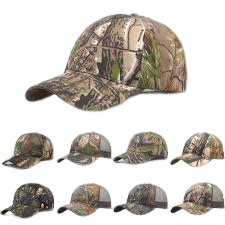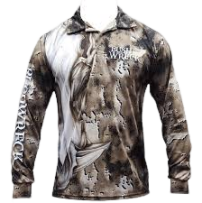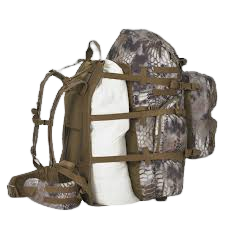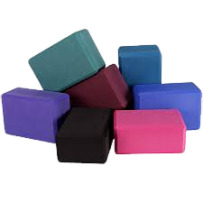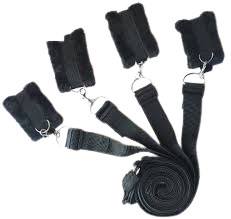The Hunting Hat: A Practical and Essential Gear for Every Outdoorsman
Introduction
In the vast and diverse world of outdoor pursuits, hunting stands out as a time honored tradition and a primal connection between humans and the natural world. Amidst the arsenal of tools and equipment that a hunter relies upon, the hunting hat stands as a symbol of both practicality and tradition. In this comprehensive exploration, we will delve into the evolution of hunting hats, the diverse types available, and the essential role they play in the success and comfort of hunters across the globe.
The Historical Roots of the Hunting Hat
The history of hunting hats is deeply entwined with the evolution of hunting itself. Early hunters likely fashioned rudimentary head coverings from available materials, not only for protection against the elements but also as a means of camouflage. As hunting Hat techniques advanced, so did the design and functionality of hunting hats.
Primitive Beginnings
The earliest hunting hats were likely crafted from natural materials such as animal hides, furs, and plant fibers. These early head coverings served the dual purpose of providing warmth and offering a primitive form of camouflage, allowing hunters to blend into their surroundings.
Influence of Cultures
Different cultures around the world contributed to the diversity of designs. For example, Native American tribes often incorporated feathers and animal pelts into their headwear, not only for practical reasons but as symbolic elements representing connection and respect for nature.
Advancements in Material and Design
With the advent of more advanced textile manufacturing techniques, hunting hats began to incorporate materials like wool and canvas. This marked a shift towards more durable and weather resistant headgear, better suited to the varied environments encountered by hunters.
Types of Hunting Hat
The modern market offers a wide array of hunting hats, each tailored to specific hunting environments, weather conditions, and personal preferences. Let’s explore some of the popular types of hunting hats and the unique features they bring to the field.
Camouflage Hat
Camouflage remains a central theme in hunting gear, and hats are no exception. Camo hats come in various patterns to match different terrains, from dense forests to open fields. The goal is to help hunters remain concealed, increasing their chances of approaching game undetected.
Insulated Hat
Insulated hunting hats are designed for cold weather conditions. They often feature materials like fleece or Thinsulate to provide warmth without adding bulk. Some come with ear flaps for added protection against biting winds.
Boonie Hat
Boonie hats, with their wide brims, are a versatile choice for hunters. The broad brim offers shade from the sun and rain protection, making them suitable for various weather conditions. Boonie hats are particularly popular among those hunting in more temperate climates.
Blaze Orange Hat
Safety is paramount in hunting, and blaze orange hats are a crucial element in ensuring visibility. These hats are often required in hunting seasons where visibility to other hunters is essential to prevent accidents.
Waterproof Hat
For hunters facing wet and rainy conditions, waterproof hats provide essential protection. These hats are often made from materials like Gore Tex, ensuring that the head stays dry even in the heaviest downpours.
Practical Benefits of Hunting Hats
Hunting hats are not mere fashion accessories; they are indispensable tools that contribute to the success and comfort of a hunting expedition. The practical benefits of hunting Hat extend across various aspects of the hunting experience.
Camouflage and Concealment
The primary function of a hunting hat is to aid in concealment. Whether it’s blending into the foliage with a camo hat or donning a blaze orange hat for visibility, the right headwear helps hunters remain undetected by their quarry or other hunters.
Weather Protection
Weather conditions can be unpredictable, and hunters often find themselves exposed to rain, snow, or harsh sunlight. with water resistant or waterproof features, along with insulation for cold weather, ensure that hunters stay dry, warm, and focused on the task at hand.
Sun Protection
Extended hours in the field expose hunters to the sun’s harmful UV rays. Many hunting hats are designed with wide brims to shield the face and neck from direct sunlight, reducing the risk of sunburn and providing a more comfortable experience.
Noise Reduction
Certain hunting situations require a high level of stealth, and the rustle of leaves or twigs can alert game to a hunter’s presence. Some hunting hat are designed with quiet materials, helping hunters move silently through the terrain without disturbing their surroundings.
Insect Resistance
Insect bites can be a significant nuisance in the outdoors. Hunting hats with insect repellent features or made from materials that discourage insects contribute to a more comfortable and focused hunting experience.
Tradition and Symbolism
Beyond the practical considerations, hunting hat carry a sense of tradition and symbolism in the hunting community. Many hunters develop a strong attachment to their hats, often passing them down through generations or using them to commemorate significant hunts.
Family Heirlooms
Some hunters inherit hats from their parents or grandparents, creating a tangible link to the hunting traditions of their family. These hats often carry the marks and scars of countless adventures, adding to their sentimental value.
Trophy Hats
Successful hunts are often celebrated with the addition of tags, patches, or other emblems to a hunter’s hat. Trophy hats become a record of achievements, each mark telling a story of a specific hunt, a challenging terrain, or a prized game animal.
Customization
Many hunters take pride in customizing their hats, whether it’s adding patches representing their favorite hunting brands stitching in symbols that hold personal significance. This customization not only adds character to the hat but also serves as a form of self expression for the hunter.
Maintenance and Care Of Hunting Hat
To ensure the longevity to retain its functionality and character, proper maintenance is crucial. Depending on the materials used and the conditions faced, here are some general guidelines for caring for a hunting hat:
Cleaning
Regular cleaning is essential, especially after hunts in muddy or wet conditions. Follow the manufacturer’s instructions for cleaning, as certain materials may require specific care. Handwashing with mild detergent is often a safe option.
Drying
Air drying is preferable to maintain the hat’s shape and prevent shrinkage. Avoid exposing the hat to direct sunlight for extended periods, as this can cause fading and damage.
Storage
Store hunting hats in a cool, dry place, away from direct sunlight. Avoid crushing or folding hats, especially those with brims, to prevent permanent deformation.
Technological Advancements in Hunting Hats
As technology continues to advance, it have evolved to incorporate innovative features that enhance their performance and utility in the field. These technological advancements cater to the modern hunter’s need for efficiency, connectivity, and adaptability.
Integrated Electronics
Some hunting hats now come equipped with integrated electronics, such as built in LED lights. These lights can be particularly useful during early morning or late evening hunts, providing illumination without the need for a separate flashlight.
Bluetooth Connectivity
Bluetooth enabled hunting hats allow for hands free communication in the field. Whether coordinating with fellow hunters or listening to hunting podcasts for tips and strategies, this feature adds a layer of convenience to the overall hunting experience.
Moisture Wicking and Cooling Technologies
Advanced moisture wicking materials help keep hunters dry by drawing sweat away from the skin. Cooling technologies, such as strategically placed vents or even battery powered fans, contribute to comfort during hot weather hunts.
GPS and Navigation Features
Some high tech integrate GPS technology, helping hunters navigate unfamiliar terrain more efficiently. This feature can be particularly valuable for those exploring expansive hunting hat grounds.
Conclusion
In the dynamic world of hunting Hat, where adaptability and tradition coexist, the hunting hat remains a timeless and essential piece of gear. From its humble origins in primitive camouflage to the diverse array of styles and features available today, the testament to the enduring connection between hunters and the great outdoors. As hunting hat continue to navigate the challenges of different terrains and climates, the stands as a reliable companion, offering both practical utility and a touch of tradition to every expedition.
The hunting hat, as a symbol or practical accessory, embodies a multifaceted significance. Whether it serves as a tool for survival in outdoor pursuits or carries symbolic weight in literature or culture, the hunting hat is a versatile and often underestimated item. Its representation can range from a connection to nature and adventure to a symbol of hunting hat identity or rebellion. Ultimately, the significance of the hunting hat lies not just in its utilitarian function but in the layers of meaning and interpretation of hunting hat it can acquire in different contexts.
